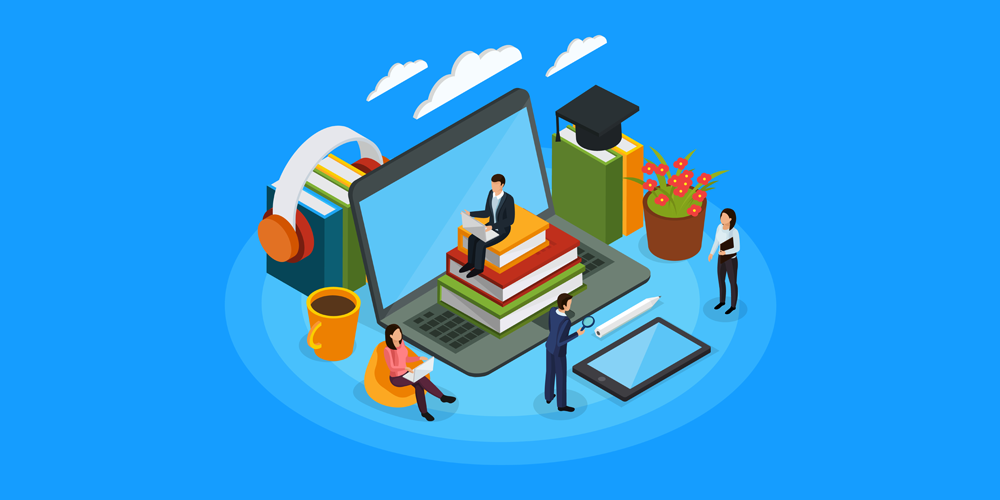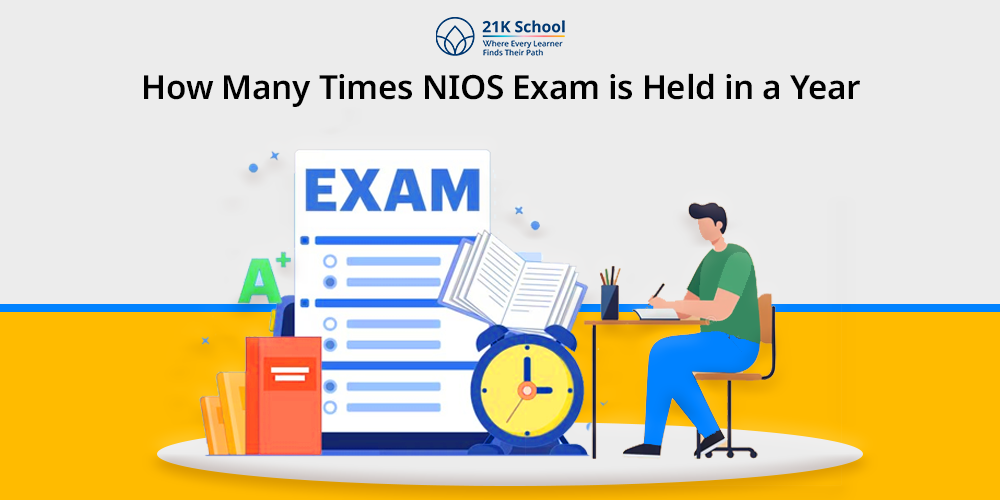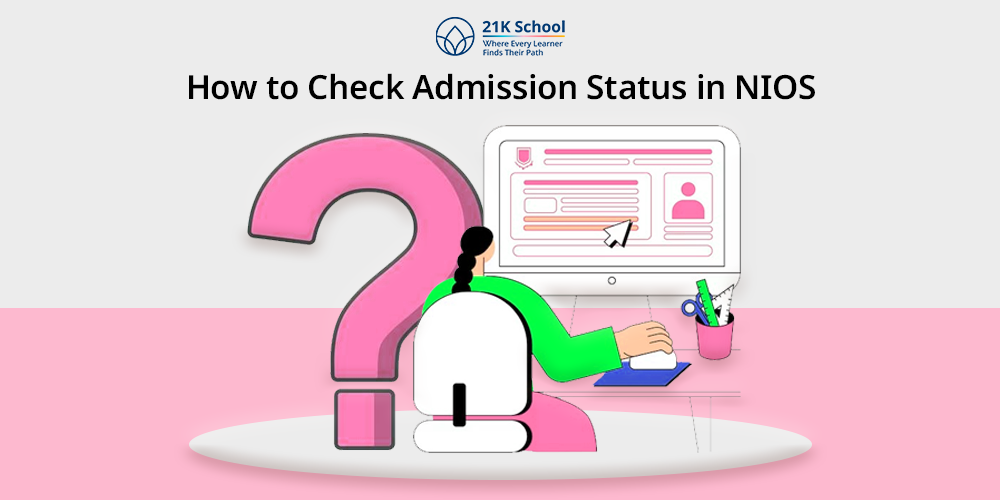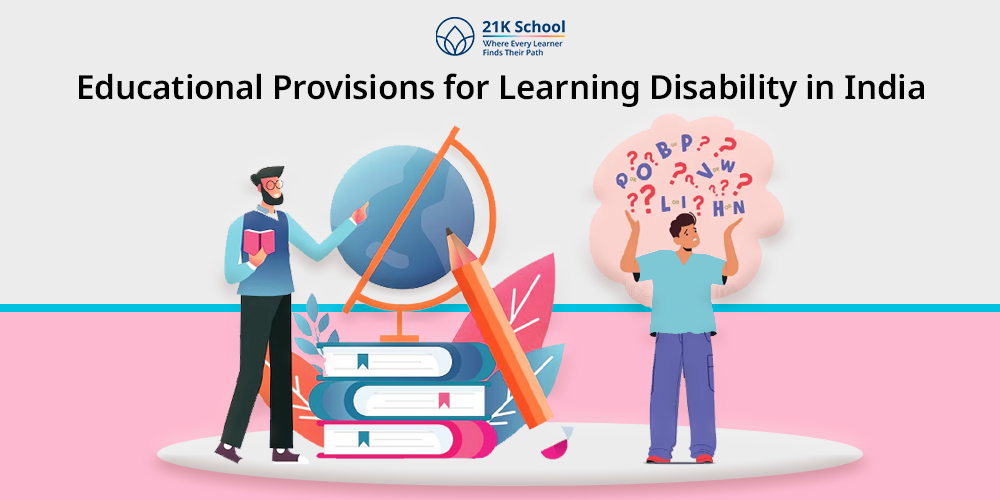
As we are growing, the landscape of higher education has been seen evolving rapidly.
The traditional form of education is being overpassed by several new methods and among the most significant method in these last few years, micro-learning has emerged as one of the best for the students.
It is an educational strategy that splits down the tough topics into easier and understandable units so that students can easily grab the ideas.
Being a renowned and most people-chosen homeschooling platform offering three different curricula (UK, US, India), 21K School stands out among the other to implement microlearning techniques to improve the experience of students in their education.
In this blog, we will talk about the key benefits of microlearning in higher education and why it has become an indispensable tool for learners these days.
Contents
What is Microlearning?
Microlearning is an educational approach that tries to make the content small, easy to understand, and those which students can retain for a long.
They are mainly designed around a single concept or skill and are presented in one unit.
These micro units can be easily accessed with the help of a digital platform which makes learning easier and more convenient.
It is for this reason that all the contents of microlearning are shorter and appetizing and that they can be easily incorporated into the learner’s daily timetable.
Types of Microlearning
Microlearning contains a huge range of types that allow students to grasp the concepts more easily. Microlearning is an essential component for formal and informal training.
Here you can check the types of microlearning mentioned below.
1. Infographics
Infographics are one of the amazing microlearning methods that contain visuals, data, graphs, designs, elements, etc., that help in understanding concepts more easily and enhance learning outcomes.
Infographics help in making complex concepts simpler and allow us to understand difficult concepts. Infographics are very useful for understanding large concepts through visual representations.
2. Simulation
Simulation is an incredible method of microlearning, through which students understand concepts with real 3d concepts and virtual realities. Simulation makes learning more interactive and fun in the learning approach.
Through simulation, students can understand difficult concepts in a practical approach that also enhances their knowledge retention.
3. Gamification
Gamification is an interactive method of education. With innovation in online education, gamification has taken a new initiative to enhance the learning process of students.
Gamification allows kids to learn complex topics through exciting methods.
Gamification includes games, badges, points and bonuses. This initiative makes learning more engaging and makes kids more motivated. Through gamification, learning becomes more fun and enjoyable.
4. Quizzes
Quizzes are an incredible microlearning technique that helps to understand performance and measure understanding. Through quizzes, teachers can understand how much knowledge students have gathered from the contexts.
This also allows students to understand their performance as well, and assists in developing confidence and social cohesion.
5. PDFS
PDFS and E-resources help in understanding the concepts more easily. PDFS helps in reducing the hard paper copies and provides easy access to all materials.
This enables students from any location to get study material. It enhances students’ experiences and provides them with quality education.
6. Mobile Learning Apps
Mobile learning apps are an incredible learning tool to provide microlearning, as they provide various platforms. Through mobile learning apps, students can easily participate in any classes and acquire any knowledge from any location.
With the increasing trend of smartphones and tablets, it has become easy to access any information at any time. This helps in enhancing engagement and student retention.
7. Podcasts
Podcasts are an incredible way to enhance learning outcomes through audio.
Podcasts use audio-based learning methods and are an effective microlearning method, in which instructions are delivered through audio and voice format. It is an interactive and accessible method of sharing information.
8. Video-Based Learning
Video-based learning is an interactive method of microlearning.
Video-based learning includes video-based visuals, through which instructions will be provided. Video-based learning is amazing for grabbing attention and conveying information more memorablely.
Video-based learning can be conducted through the right selection of the different e-learning platforms . It allows individuals to grasp the concepts more easily and from any location.
9. Flashcards
Flashcards are another easy way to make learning more interactive. Flash cards provide small, focused and simple explanations of tough concepts.
Flashcards help students to enhance their memory retention and learn new topics in a shorter time. Flashcards in microlearning allow them to get quick access to explanations.
10. Scenario-Based Learning
Scenario-based learning is another microlearning method in which students learn through real-life scenarios. One of the effective examples for scenario-based learning is case studies, which give students choices to make decisions.
This method helps students to explore practical skills and apply their knowledge in the real world. This type of method makes education engaging and enhances active participation.
11. Whiteboard Animation
Whiteboard animation is an interactive method of microlearning in which students learn by drawing and animation. In whiteboard animation, concepts were explained through pictures, animations, and visuals.
This method makes it easier for students to learn difficult concepts. Whiteboard animation makes classes engaging and fun in the learning process, which allows students to participate in class activities.
12. Blogs
Blogs are an incredible idea to enhance learning outcomes by providing short articles. A blog helps students understand the concepts more effectively and quickly grasp the concepts.
Through blogs, students can study at any location and at any time with the help of mobile phones or computers.
What are the benefits Of Microlearning in Higher Education?
Consequently, microlearning in higher education has several benefits that help improve the learning process of the students as elaborated below.
Here, we have provided you with some of the highlighted benefits of microlearning in the pointer below;
1. Improved Knowledge Retention
Microlearning helps in enhancing knowledge retention among students. As microlearning provides interactive and personalised learning as well as easy access to quality educational materials, this makes learning more engaging and easier.
Through microlearning, students grasp concepts more easily and help them to understand difficult concepts in a simpler way, which allows them to enhance their knowledge retention.
Microlearning uses short and easy sessions of classes, which enables students to recall the last-minute topics for a longer period of time.
2. Increased Engagement
If an educational program cannot engage the student it has no meaning. Engagement is an important factor that must be there.
The use of multimedia components, such as videos and quizzes or, better yet, lessons in an interactive form that tie the student to learning—be it microlearning.
Since this is a form of digital media method, learning has been made more interesting and appealing and it accommodates all the categories of learners.
Learn more about how you can engage kids in learning to code.
Microlearning has transitioned the static learning experience from the passive method to an active method due to the inclusion of interactive dimensions.
For example problem or example, the students may solve them right from the time the topic will be explained.
It, therefore, makes them to be motivated as they can practice what they have been taught.
Microlearning also comes with the advantage of interaction, thus it is very relevant for subjects that require practical approaches like science and technology subjects.
3. Flexibility and Accessibility
To speak about the merits of microlearning, it is possible to state with a fair amount of confidence that flexibility is one of the most obvious ones. This the future of schooling , i.e, accessible and flexible.
Microlearning modules are highly flexible and can be studied at any time from the comfort of the learners’ homes, using hand-held devices, tablets, and laptops, among others.
This mobility feature holds value for students of universities and other tertiary institutions because most of them are conscious of their tuition and other obligations that come with working, interning, or volunteering, and other social obligations.
This kind of flexibility to an extent ensures that the students do not feel the pressure of following through with a class but also ensures that the student is afforded adequate time to understand different concepts.
As has already been mentioned, 21K School is an online homeschooling platform, and, therefore, the focus on the individual approach to learning is the main principle of 21K School’s functioning.
4. Cost-Effectiveness
Microlearning can also be looked at as time and cost-efficient not only for the teaching establishments but for the learners as well.
I guess, a face-to-face form of traditional education as a method of transmission and creation, may be expensive in terms of money used in the procurement of textbooks, class materials, and time from instructors.
On the other hand, the achievement of micro-learning modules is that these are normally in digital forms and therefore can be developed and disseminated relatively cheaply.
As far as the students are concerned, it can be pointed out that one of the biggest merits of microlearning is its exclusion of the use of costly books and other learning materials which helps to cut down the cost.
Furthermore, with the advancement of technology in online education all the content one needs is there on the internet so there is no need to travel or rent an apartment to attend classes for those who would have to.
5. Personalised Learning Experience
Flexibility is possible with microlearning since the students can learn at their convenience time and in the areas they prefer.
This approach turns out to be very helpful in sustaining the interest of the learners because of this reason; what is taught to them has a close relationship with what the learner as an individual would wish to learn.
Today’s educational platforms like 21K School use microlearning to create the learning map for the students.
With a wide range of microlearning modules, students can pick relevant content that meets his/her learning requirements and thus develop a learning plan.
It increases interest and guarantees that the students acquire the requisite information and skills they need to succeed in their chosen fields.
Learn more about the reasons How Higher Education Is Becoming Increasingly Irrelevant
6. Build a Culture of Learning
Microlearning helps in building a culture of learning among students by making the complex lessons into smaller groups. This allows them to understand the concepts more easily and enhances their knowledge retention.
A learning culture helps in building a collaborative learning environment among peers and allows them to cooperate with each other.
A learning culture helps in enhancing productivity and encourages students to participate in learning methods.
7. Reduction in Cognitive Overload
Microlearning is an incredible way to reduce cognitive overload. Microlearning helps in reducing cognitive overload by making complex concepts into simpler ones.
Various methods of microlearning allow students to cater for their learning style and provide them to develop effective strategies for solving complex problems. This helps in developing proper cognitive skills in students and reduces workload.
8. Close Skill Gap
Microlearning helps in enhancing knowledge through effective strategies. Microlearning assists in closing the skill gap through developing new strategies to achieve the targeted objectives.
Making difficult concepts into simpler ones helps in enhancing skills and boost students’ performance. This enables students to acquire new skills and generate new solutions as per the problems.
Microlearning is an ongoing process that promotes lifelong learning, which is very essential to stay updated.
9. Keep Pace with Emerging Trends
Easy access to education and lifelong learning is a microlearning method for making students stay updated. With the help of microlearning, education becomes easily access for all.
As microlearning helps in breaking the difficult concepts into simpler ones, which enables them to stay updated with the current trends and events, which helps in maintaining the pace with the emerging trends of the modern world.
10. Just in Time Learning
Just in time learning is a different type of learning approach in which the right information is provided at the right time to enhance the learning efficiency of students.
Just in time approach is different from microlearning; however, both are combined to provide information to students fast and easily. Technology in education makes it possible to provide educational contexts accessible to every individual at the same time and pace.
Best Practices for Implementing Microlearning
A microlearning environment is essential to promote effective education to every individual. Through microlearning, students can grasp any concepts by breaking them into simpler formats.
Here are the best practices for implementing microlearning mentioned below.
1. Leveraging Technology
Using e-learning platforms and digital platforms helps in enhancing the learning process of students.
Using virtual learning platforms, LMS, Mobile apps, video learning, visual representation and so on, makes it easy for students to have equal and easy access to education from any location.
Microlearning is all about using technology to break down complex concepts into simpler topics.
2. Enhance Regular Engagement
Microlearning uses an interactive and fun learning approach to keep students engaged in the learning methods. Short and small learning methods enable students to grasp difficult concepts and allow them to engage in learning consistently.
Regular engagement also helps in connecting with others and promotes a collaborative learning environment.
3. Combining Method
Microlearning is an incredible method in which other methods of learning can be combined in order to get a deep understanding. Microlearning can be combined with traditional methods of learning to make education more effective and flexible.
Combining digital literacy with traditional education helps in understanding the concepts more easily.
4. Mobile Learning
Microlearning is an incredible method that can be used for mobile learning as well. Microlearning materials are accessible on mobile devices so that students can access their educational material from any location.
Self-paced learning is made possible by mobile learning, which increases training flexibility and convenience regardless of time or place.
Conclusion
Microlearning is transforming higher education by making it more effective in terms of learners’ interaction with lessons.
In some aspects, it encourages students to learn more, elongate their interests, and study on their own time since what is learned is divided into several parts.
Being one of the best homeschooling options, 21K School guarantees the application of such microlearning approaches to learning interestingly and effectively.
Consequently, it can also be concluded that microlearning may have a positive effect on students’ education and their interactions with certain future professions.
Introducing microlearning into higher education also opens a possibility to meet the expectations of contemporary students along with laying the groundwork for the arising of a more effective and fun process of learning.
In effectiveness, retention or engagement, or expenses, the role played by microlearning is apparent, and the embrace of this modality of training is a progressive development in the progression to better learning.



